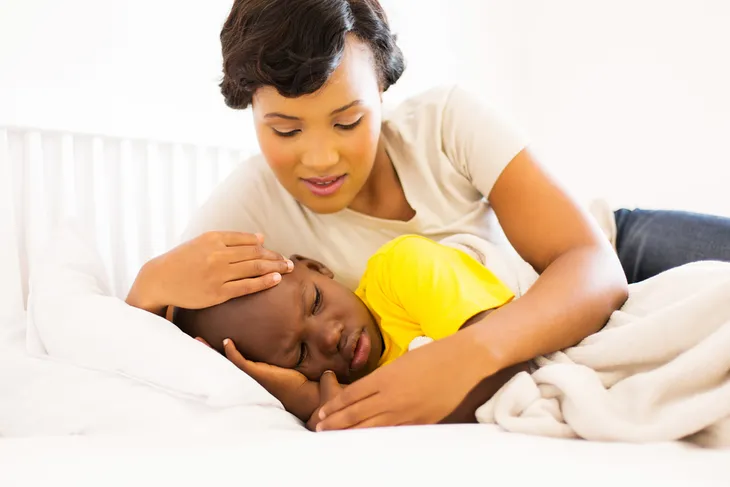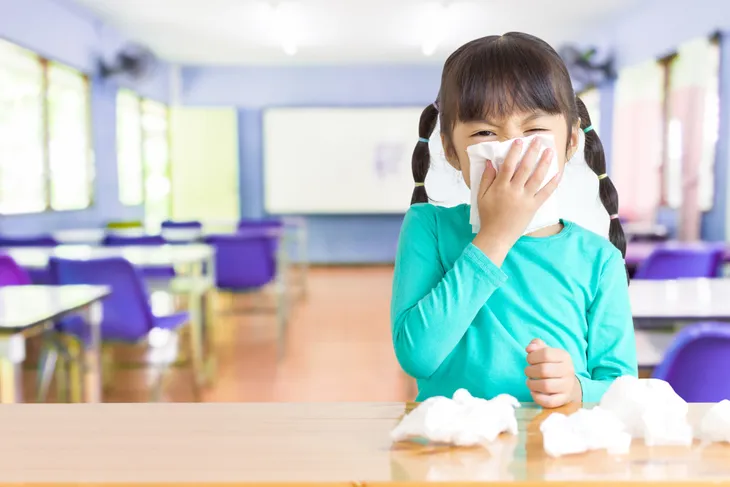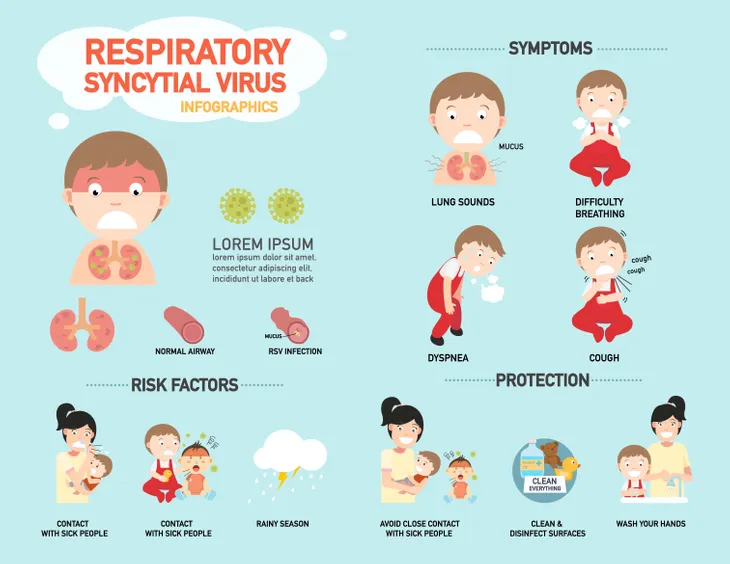Come September, kids are welcomed back to the books by more than just new teachers and locker partners. Viral infections, bacteria, and germs are lurking in the hallways and classrooms, ready to pounce on unsuspecting students with low immune systems.
Although doctors recommend a healthy diet, regular physical activity, washing hands regularly, and plenty of sleep to help keep young minds and immune systems sharp—beware of these prevalent back-to-school contagions that your kids may be tracking home along with their homework…
Influenza
It usually starts with a scratchy throat, followed by an irritating cough, fatigue, chills, clammy skin, and a muscle pain…all over. The problem is that once the symptoms of influenza set it, it’s often too late!
However, the Centers for Disease Control (CDC) recommend that every student and school faculty member get a flu shot as a way to prevent the onslaught of influenza circling hallways in late September, and October, and again in the late winter months. The CDC claims a simple flu shot will reduce your probability of contracting the flu by 40 to 60-percent.
Colds
If you have school-aged children, “cold season” is all year long. This is because the “common cold” as its dubbed can be made up of a combination of over 20 different viral strains—that cause that oh-so-familiar sinus congestion, stubborn cough, runny nose, sore throat, fatigue, and sinus pressure headache.
So keep kids out of school if they have a cold and feed a cold with loads of fluids and plenty of rest for at least 2 days—through the most contagious period.
Respiratory Viruses
The telltale wheezing cough of a respiratory syncytial virus (RSV), infects roughly 2 million school-aged kids each fall, according to the CDC.
Not only is RSV extremely contagious, but it’s also easy to mistake for any other type of illness. RSV can cause bronchiolitis which is inflammation of the airways leading to the lungs. According to the CDC, RSV is the number one cause of bronchiolitis and pneumonia in children under 1.
Strep Throat
Strep-causing bacteria is nasty stuff, especially if you’re a school-aged child between 5- and 15-years old. Strep spreads like wildfire through schools from just a simple uncovered cough or sneeze, or hand to hand contact between students, resulting in a sore, red, swollen throat and tonsils, fever, nausea, and scarlet fever, if not treated as soon as possible with a round of doctor-prescribed antibiotics.
Head Lice
Just the thought of the minuscule, blood-parasitic bugs makes me scratch furiously at my skull. But the CDC says that parents of 3- to 12-year-old girls (and boys, less so) should be on high alert for head lice once school is in session. Even though personal hygiene has zero to do with contracting head lice, the tiny insects (about the diameter of a sesame seed) love to live in human hair and feast on blood drawn from the scalp.
Also, check the kids regularly for lice eggs, which are similar in size to dandruff flakes, and spread quickly with close contact—for instance when sharing hair brushes and combs, hats and hair accessories.
Mononucleosis
Mononucleosis (or mono) infection can wreak havoc and long-term illness through high schools and college dorms, most commonly targeting kids between the ages of 10- and 19-years old. The CDC notes that mononucleosis is an illness that starts with the Epstein-Barr virus, which causes a combination of pure physical exhaustion, severe sore throat, and fever, and exhaustion, and usually strikes those who are run down with low immunity.
Although mononucleosis is often referred to as “kissing disease” and the virus is most commonly transmitted via saliva, it can also spread by sneezing on or sharing food or drink with an infected individual.
Meningococcal Meningitis
In recent years, the CDC has noticed an increase in meningococcal meningitis, a bacterial infection that causes swelling of the brain (or membranes protecting the brain), sudden fever, neck stiffness, swollen glands, persistent headache, nausea, and joint pain in college students.
Current statistics show that roughly 125 kids, under the age of 21, are infected with meningococcal meningitis yearly on U.S. college campuses, likely due to close living quarters. This is why many colleges now require student vaccinations to prevent the spread of meningococcal meningitis on college campuses and especially in dormitories.










